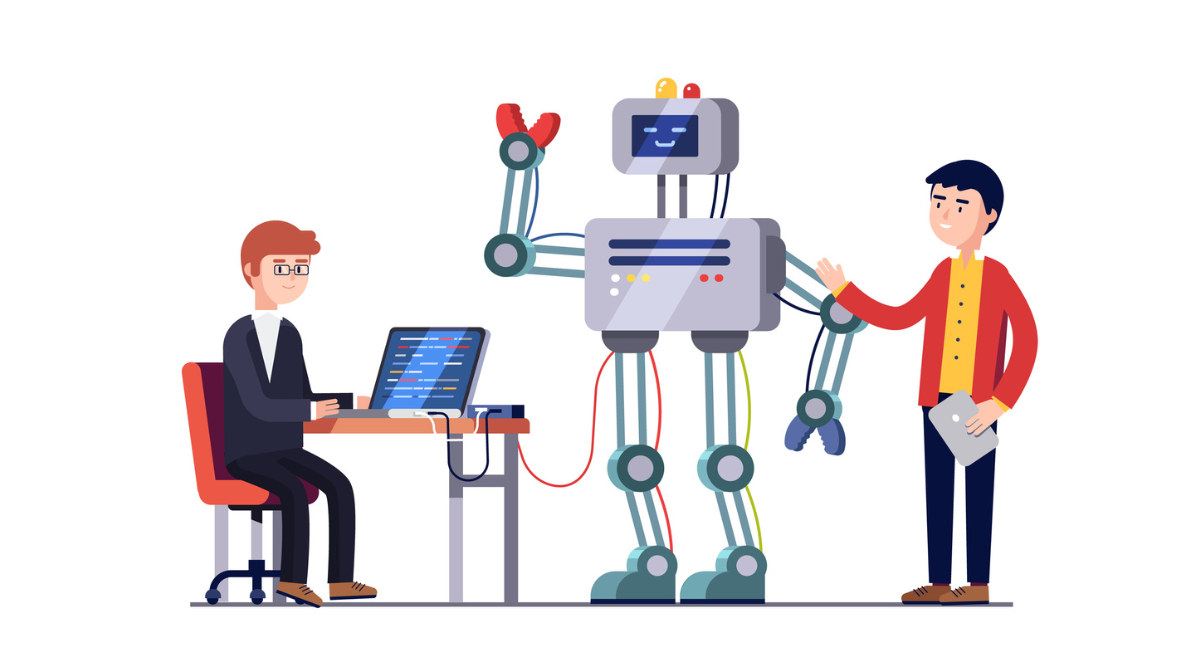In fact, a proper and effective test is what marks the success of a software project. This important stage ensures that the developed product will be error-free, works to its full potential, and gives an effective user experience.
But again, the road you take manual and automated testing will define the direction of your project. Let's learn more about them in order for you to decide which path meets your needs best.
Manual Testing vs Automation Testing

In the present dynamic scenario of software development, delivering products at the earliest without compromising on quality is what matters most.
For this to happen, it is most important to test the software whether through Manual Testing vs Automation Testing to ensure it is working as designed, all features respond smoothly in mixed conditions, and it fulfills user expectations.
There's never-ending discussion about what's better: manual or automation testing? Both have their followers and opponents. It is important to know both of their pros and cons before determining the way which suits your project best.
Manual Testing: A Deep Dive
Definition and Key Features
Manual testing involves human testers manually executing test cases without using automated tools. Testers follow predefined steps to validate software functionality, usability, and overall performance. They document their findings, noting any defects or issues that need addressing.
Advantages of Manual Testing
Manual testing offers several benefits:
- Flexibility: Testers can adapt to changes quickly and handle unexpected issues more efficiently.
- Cost-Effective for Small Projects: For smaller projects or applications with limited scope, manual testing can be more economical.
- Usability Testing: Human testers can better assess the user experience, providing insights that automated tests might miss.
Disadvantages of Manual Testing
However, manual testing also has drawbacks:
- Time-Consuming: It requires significant time and effort, especially for large projects.
- Prone to Human Error: The repetitive nature of manual testing can lead to mistakes and inconsistencies.
- Limited Scope: Manual testing can be less comprehensive, as it's challenging to cover all possible scenarios manually.
Real-World Scenarios for Manual Testing
Manual testing excels in specific situations:
- Exploratory Testing: When there's a need to explore the application and identify potential issues beyond predefined test cases.
- Usability Testing: Assessing the user interface and overall user experience.
- Ad-Hoc Testing: Conducting unplanned tests to catch unexpected bugs or issues.
Automation Testing: A Comprehensive Analysis
Definition and Key Features
Automation testing uses software tools to execute test cases automatically. These tools can run predefined scripts and compare actual results with expected outcomes, identifying discrepancies and issues.
Advantages of Automation Testing
Automation testing brings several advantages:
- Speed: Automated tests run faster than manual tests, making them ideal for repetitive and time-consuming tasks.
- Consistency: Automated tests are less prone to errors, ensuring consistent results across multiple runs.
- Scalability: Automation can handle large volumes of test cases, covering more scenarios and improving test coverage.
Disadvantages of Automation Testing
Despite its benefits, automation testing has some limitations:
- Initial Setup Cost: The upfront investment in tools, infrastructure, and skilled personnel can be high.
- Maintenance: Automated test scripts require regular updates to accommodate changes in the software.
- Limited Human Insight: Automation cannot replicate human intuition and creativity, making it less effective for exploratory and usability testing.
Real-World Scenarios for Automation Testing
Automation testing is most efficient in the following scenarios:
- Regression Testing: Ensuring that new changes do not break existing functionality.
- Load and Performance Testing: Simulating high user loads to test the software's performance under stress.
- Repeated Execution: Running the same tests frequently, such as during continuous integration and delivery (CI/CD) pipelines.
Comparing Manual and Automation Testing

Speed and Efficiency
Automation testing wins in terms of speed, allowing for rapid execution of repetitive tests. Manual testing, while slower, offers the flexibility to adapt and explore.
Reliability and Consistency
Automated tests provide consistent results, minimizing the risk of human error. On the other hand, manual testing can be inconsistent due to human factors but can adapt to unexpected issues more fluidly.
Coverage and Depth
Automation testing can cover a broader range of scenarios and handle large test volumes. However, manual testing provides deeper insights into usability and user experience.
Suitability for Different Project Phases
Manual testing is more suitable for early stages of development and exploratory phases. Automation testing shines during regression testing, performance testing, and continuous integration stages.
The Human and Financial Factors
Cost Implications
Manual testing, since it has low initial investment, will be cost-effective on small-scale projects. However, manual testing and automation testing can save costs in the long-run for large projects with repetitive tasks through improved efficiency.
Return on Investment (ROI)
Automation testing is one sure way of getting a higher ROI in the long run, especially for those projects that undergo frequent regression testing. Manual testing catches immediate insights but has a lower ROI because of high labor costs.
Salary Differences
The salary packages are higher for automation testers than for manual testers, as the requirements for automation testers are more technical. In the context of Manual and Automation Testing, automation testers are paid 20-30% more in salary packages compared to their manual testing peers, according to industry reports.
The Future of Testing and Industry Trends
Artificial Intelligence in Testing
AI-powered tools are going to revolutionize software testing by having intelligent test case creation, defect prediction, and self-healing automation scripts.
In the time to come, this may blur the dividing lines that separate manual and automation testing into hybrid solutions.
Codeless Automation
Codeless automation tools democratize the testing process, allowing even nontechnical members to be more involved in creating and maintaining automated test cases. In the Manual Testing vs Automation Testing context, this shift could empower more teams to contribute to the automation process.
Shift-Left Testing
Shift-left focused on testing has a lot to do with testing early and often, done throughout the development lifecycle, thereby encouraging collaboration among testers and developers to bring quality to the software and ensure faster time-to-market.
Book a Demo and experience ContextQA testing tool in action with a complimentary, no-obligation session tailored to your business needs.
Conclusion
The decision on which technique Manual Testing and Automation Testing suits best would necessarily depend upon needs, resources, and project objectives.
For small projects, manual testing is the best, given the deficiencies in speed, human judgment, and estimated costs. Automated testing performs well in terms of speed, stability, and adaptability; hence, it is suitable for large and complex projects.
After all, a perfect blend and leveraging of both methods can afford efficiency in the end. Considering Manual Testing vs Automation Testing, think about the specific needs of the given project, and don't shy away from changing and improving your testing strategy as new technologies and trends emerge.
Remember, it is learning continuously and being adaptive that will bring success in the dynamic world of software testing. Keep abreast of new industry trends, invest in the development of skills, and find new innovative tools and methodologies to help keep your testing efficient and effective.
Leveraging the strengths of both manual and automated testing would mean guaranteed quality for your software products, thereby keeping you ahead in the game. Give your software products the highest quality by making informed decisions.
Also Read - Top 20 QA Interview Questions: Manual and Automation Testing
We make it easy to get started with the ContextQA tool: Start Free Trial.
